Recovering from a Bony Bankart lesion is only part of the journey—preventing recurrence is equally important, especially for active individuals and athletes. Prevention involves structured strengthening, thoughtful training adjustments, and sometimes external support like bracing. By integrating these strategies, patients can reduce reinjury risks and maintain shoulder health long term.
1. Strengthening the Shoulder Complex
Key Muscle Groups
- Rotator cuff: Stabilizes the humeral head in the glenoid.
- Scapular stabilizers: Serratus anterior, trapezius, and rhomboids create a solid base.
- Deltoid: Assists in controlled elevation and load handling.
Essential Exercises
- External rotation with resistance bands.
- Prone horizontal abduction with light weights.
- Scapular wall slides and serratus punches.
- Closed‑chain drills like push‑up plus to enhance dynamic stability.
Pro Tip: Perform exercises with proper technique, gradually increasing resistance to build endurance without overloading healing tissues.
2. Training Adjustments
Modify High‑Risk Movements
- Limit excessive overhead motion early in rehab.
- Avoid sudden, heavy lifting or ballistic movements until strength symmetry is achieved.
Implement Sport‑Specific Progressions
- Throwing sports: Gradual return with interval throwing programs.
- Contact sports: Controlled reintroduction of tackling or blocking drills with close monitoring.
- Swimming: Focus on stroke mechanics to reduce microtrauma.
Monitor Fatigue
Shoulder stabilizers fatigue quickly; incorporate rest intervals and avoid overuse, which can increase instability risk.
3. Protective Bracing and Support
Functional Braces
- Shoulder braces with straps limit extreme external rotation or abduction during high‑risk activities.
- Commonly used in football, rugby, or wrestling to provide added stability.
Taping Techniques
- Kinesiology taping can enhance proprioceptive feedback.
- Not a substitute for proper strengthening but a useful adjunct during return phases.
4. Long‑Term Maintenance
- Continue shoulder stabilization exercises even after full return to sport.
- Incorporate shoulder‑friendly cross‑training like rowing, swimming, or low‑impact resistance work.
- Regular check‑ins with a therapist or trainer to tweak programs and address any early symptoms.
5. Lifestyle Considerations
- Warm‑Up Routines: Dynamic stretches and activation drills before sport.
- Post‑Activity Recovery: Ice or gentle mobility work to reduce inflammation.
- Balanced Workload: Integrate rest days and avoid overtraining.
FAQs
1. Do shoulder braces completely prevent recurrence?
No, they reduce risk during high‑risk motions but cannot replace proper strengthening and control.
2. How long should I continue strengthening exercises?
Indefinitely. Maintenance programs help keep the shoulder resilient against future injuries.
3. Can taping replace a brace?
Taping provides proprioceptive support but does not offer the same mechanical restriction as a brace.
4. Is there a specific timeline for returning to heavy training?
Typically after completing rehab phases and demonstrating symmetrical strength and full range of motion, often around 4–6 months post‑op.
5. Should all athletes use shoulder braces after a Bankart repair?
Not necessarily—bracing is most beneficial in contact sports or for athletes with residual apprehension.
Preventing recurrence after a Bony Bankart lesion requires a comprehensive approach—strengthening key shoulder stabilizers, modifying training, and using protective gear when appropriate. By adopting these strategies, athletes and active individuals can confidently return to their sports while safeguarding their shoulders for the future.
